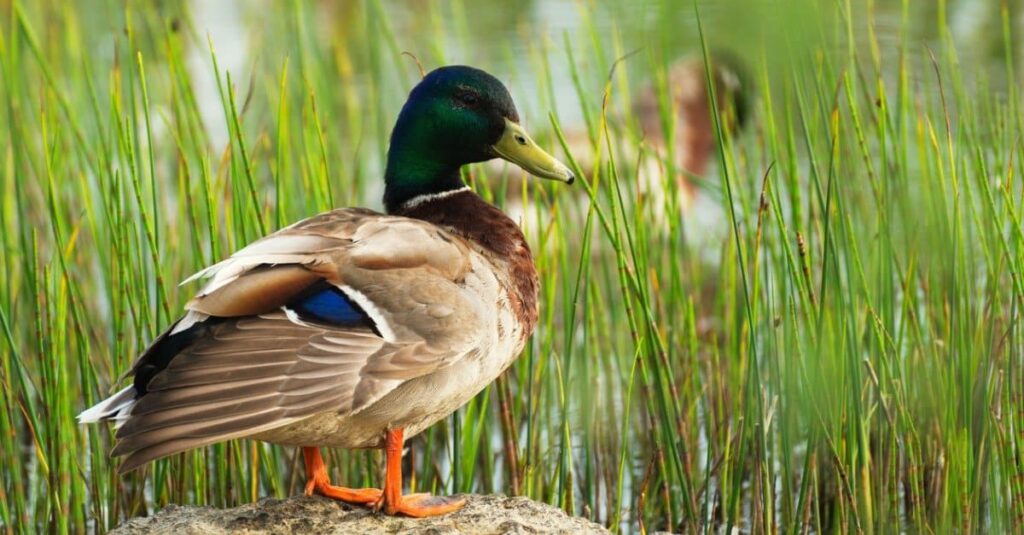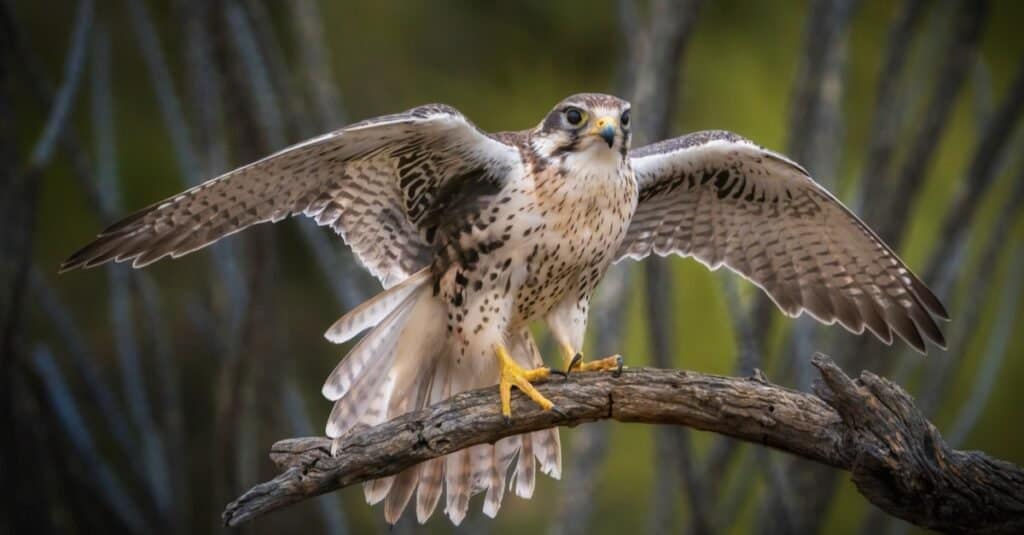Talk about being a sitting duck! As the video at the bottom of this page shows, it’s a good idea to follow your mates when they decide to leave. This poor mallard was not taking enough notice of what was going on around him and he paid the ultimate price!
Marvel at the speed and accuracy of this prairie falcon! This truly is deadly precision!
Check Out the Impressive Attack Skills of the Prairie Falcon!
Prairie Falcon Takes Out a Mallard

Mallards are an attractive target for local raptors
©iStock.com/M-Production
The video starts with a serene scene. A mallard drake is chilling out on some mud and all seems well but if you look carefully at the background, all the other ducks have started to move away! Why is that?
Within three seconds of the footage starting, it’s all over. A missile (you can’t tell what it is) has come hurtling from the left and bowls over the mallard which rolls onto its back. The stunned bird tries to get to its feet but is clearly too badly injured and just collapses in a heap. Then, you get to see what made the attack. A bird of prey, a prairie falcon, lands a little way behind the mallard.
The footage includes a slow-motion version of the attack which gives you a better chance to see what is going on. The falcon arrives with extraordinary speed and pulls its legs in front of it so that it literally kicks the duck in the head, flies off, and then returns to see if the attack has been successful.
With the duck dead (or at least incapacitated), the falcon proceeds to stand on top of it and peck at its flesh.
Prairie Falcons as Superb Hunters

Falcons are the fastest animals on Earth!
©JayPierstorff/Shutterstock.com
Falcons are the fastest animals on earth – and in the air! This particular footage was filmed in Calgary, Alberta. The video notes explain that there is a large flock of mallards feeding in some fields and that they are an attractive target for local raptors.
What we see here is a classic hunting technique for this amazing bird. They usually target small birds and mammals. This mallard, however, is heavier and stronger than
the falcon so getting into a prolonged struggle on the ground is not a great idea. Prairie falcons are superb at ground attacks. They fly fast and low at ground level and take the target by surprise. This mallard literally did not know what hit it!
Is it Normal for Falcons to Attack Ducks?

©Alan Vernon, CC BY 2.0 – License
Falcons in general tend to prey on birds and the prairie falcon is no exception. They have a wide variety of birds that they prey upon, in addition to other small mammals, depending on where they reside. For those closer to urban areas, pigeons seem to be the bird of choice. For those closer to coastal areas, ducks and shorebirds fit the bill and provide a tasty meal. Ducks are also one of the more frequent meals of the peregrine falcon, as its speed allows it to grab just about any prey.
Quite often, they may take animals larger than themselves, even though they may not be able to carry them, but they will use their impressive talons to shred the meal. Prairie falcons are considered one of the more aggressive raptors and will pursue their prey closer to the ground using their quick flight speed.
How Large Do Prairie Falcons Get?

The scientific name for the prairie falcon is
Falco mexicanus.©Chris Hill/Shutterstock.com
There are over 40 species of falcons, but the the prairie falcon (Falco mexicanus) is a large falcon similar in size to the peregrine falcon, both of which are about the size of a crow. Adult females are bigger than males in size, with average lengths of 16 inches, a wingspan of around 40 inches, and weights averaging about 1.6 pounds.
In contrast, males usually measure about 15 inches in length, with weights around 1.1 to 1.4 lbs. Their wingspan can be 37 inches. The largest species of falcon is the gyrfalcon, a beautiful white bird that can have a wingspan of more than four feet and weighs an average of three pounds.
The photo featured at the top of this post is © JayPierstorff/Shutterstock.com
Thank you for reading! Have some feedback for us? Contact the AZ Animals editorial team.






